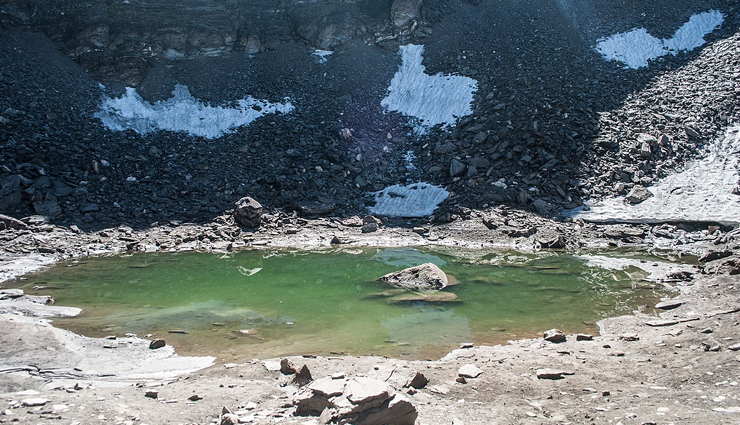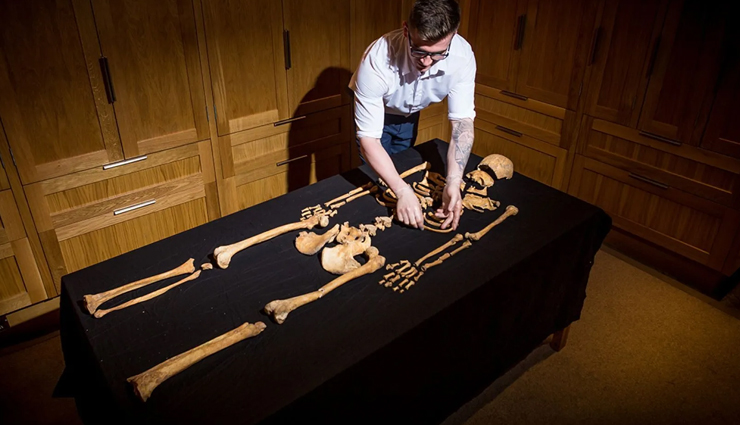6 Tourist Attractions Filled With Human Remains
By: Kratika Mon, 06 June 2022 2:24:46

Dead people and skeletons are often the last thing we expect at tourist attractions—at least most of the time. While some places are visited for their human remains, most aren’t. Nonetheless, there are some vacation destinations that happen to have dead people or skeletons lying around.
Some tourist attractions discreetly contain bodies that tourists may not even realize are there. In other cases, the remains are in the full view of the visitors, who just pass by them as if they’re another artifact. Here are 6 tourist attractions filled with human remains.

# Roopkund Lake
Roopkund lake in Uttarakhand, India, is known for its skeletons. The lake is often covered in ice. But when the ice melts—as it often does—tourists are treated to a chilling view of over 200 human skeletons scattered along its edge.
The skeletons were first discovered during World War II in 1942. The skeletons have dents on their skulls and shoulders, indicating that they had been struck by something from above. The British initially suspected they were the remains of Japanese soldiers who attempted to sneak into India.
They later realized the skeletons were too old to be the Japanese. Historians revisited the lake in 2004 and confirmed that the bones belonged to two groups of people killed by hailstones around AD 850.
One group was a family or tribe, while the other were either their porters or guides. The party was crossing the area when they ran into an hailstorm. They had no place to hide and died after they were continually hit by cricket ball-sized hailstones.

# Pompeii
Mount Vesuvius erupted around noon on August 24, AD 79. The eruption threw hot ash into the air and down onto the cities of Pompeii and Herculaneum. The ash fell on people and homes, blocking doors and causing roofs to collapse. It also filled the roads, further preventing people from escaping.
While thousands braved the ash and escaped, thousands more remained in their homes, where they cowered in fear and covered their heads with pillows. Whoever survived the falling ash and collapsing roofs was dead the next morning when a pyroclastic flow came pouring down the sides of the mountain.
Pompeii was forgotten until it was discovered in 1738. Excavators got to work and soon realized that the skeletons of the people killed during the AD 79 eruption were surrounded by empty spaces in the shape of what used to be their bodies. So they began pouring plaster of Paris into the spaces around the skeletons.
Today, we have hundreds of casts of the remains of people who died during the infamous eruption. There are also the plastered remains of a pig and a dog. The casts clearly show the faces and features of the people and animals—just as they were at the moment of death.

# Sac Uayum
A cenote is a sinkhole filled with water. It is created when weak limestone ground collapses to expose the cavern underneath. Mexico’s Yucatan Peninsula has lots of cenotes that are top tourist attractions. However, the Sac Uayum cenote stands out because it contains the remains of dead people and animals.
Sac Uayum was feared by the ancient Maya and is still feared by the locals, who have lots of folklore advising anyone against entering the cenote. In 2013, a team of archaeologists led by Bradley Russell dared the supposed dangers and decided to go into the cenote to investigate.
They discovered it is filled with skulls and bones of humans and cattle. They found 15 skulls but believe there are more. Some of the skulls are flattened, indicating they were from the Mayan civilization. While they suspect that the cows fell into the hole, they could not confirm how the humans ended up in the cenote.

# The Great Wall Of China
The Great Wall of China, totaling some 21,000 kilometers (13,000 mi) altogether, is probably the most popular structure built in ancient China. It was built by several emperors, starting with Qin Shi Huang circa 221 BC. However, most of what remains of the wall today was built during the Ming dynasty (1368–1644).
Convicts and soldiers formed the bulk of the workforce at the time Emperor Qin Shi Huang ordered the construction of the wall. It is estimated that 400,000 workers died during construction at the time. Most of the dead are believed to be buried inside the wall.

# Sedlec Ossuary
The Sedlec Ossuary (aka The Bone Church) in the Czech Republic is filled with the skeletons of between 40,000 and 70,000 people. The bones are not hidden but left in public view, where they have been turned into artworks. There are pyramids, candle-holders, and a chandelier made with human skulls and bones.
The history of the ossuary began in the 13th century, when a monk returned from a pilgrimage to Jerusalem with some soil. He threw the soil all around Sedlec cemetery. Soon, everyone in today’s Czech Republic and neighboring kingdoms wanted to be buried at Sedlec. More than 30,000 people were buried there before the cemetery ran out of space.

# Tower Of London
King Edward IV of England died on April 9, 1483. His successor was his son, Edward, who was crowned as King Edward V. But Edward V was only 13, so his uncle, Richard, Duke of Gloucester, was assigned as protector. A protector was a person who ruled until the king was of age.
Richard, Duke of Gloucester, soon got greedy and decided he wanted to be king. He imprisoned Edward V and his ten-year-old brother, Richard, Duke of York, in the Tower of London. Then he claimed Edward V could not become king because he was an illegitimate son of Edward IV.
Richard, Duke of Gloucester, was crowned king in July 1483 as Richard III. Meanwhile, Edward V and Richard, Duke of York, mysteriously disappeared. Many believe they were killed by Richard III.





-1714358904-lb.jpg)